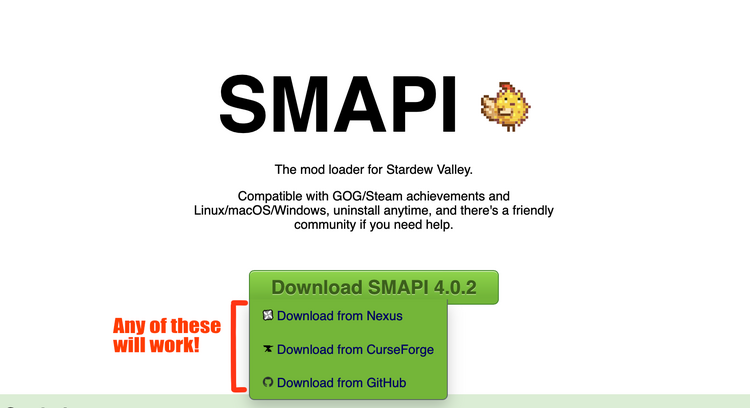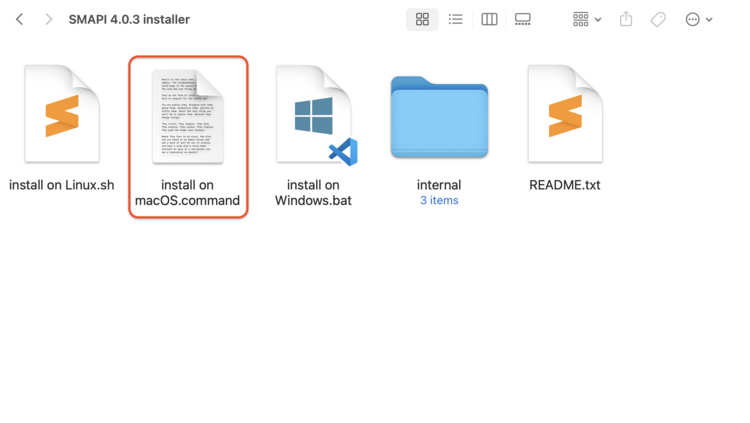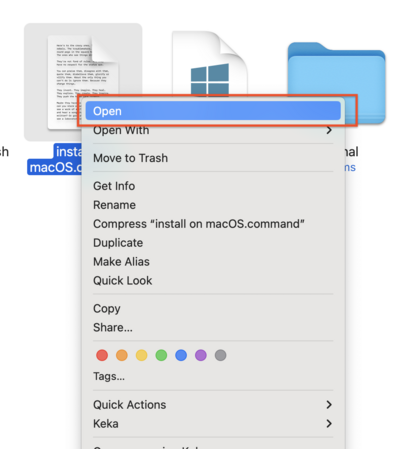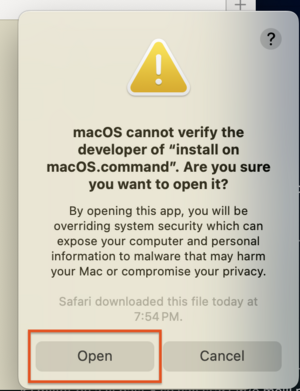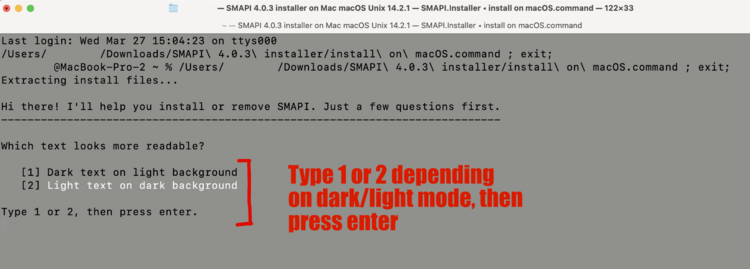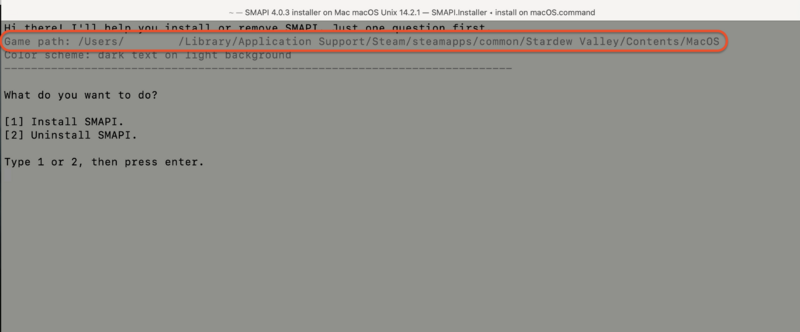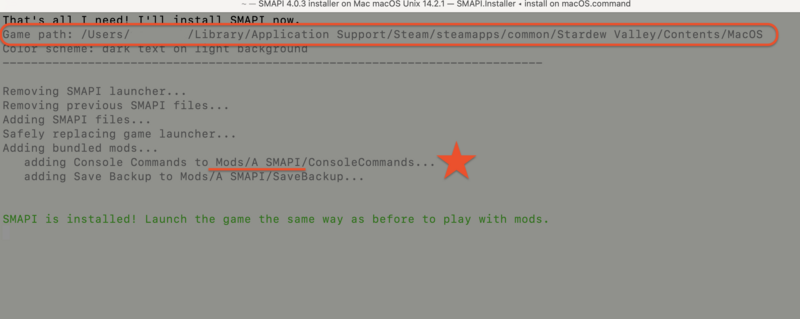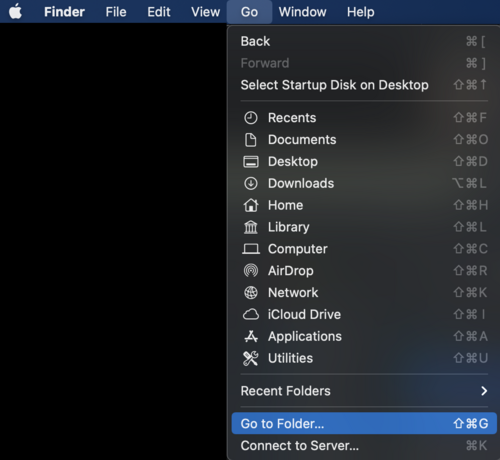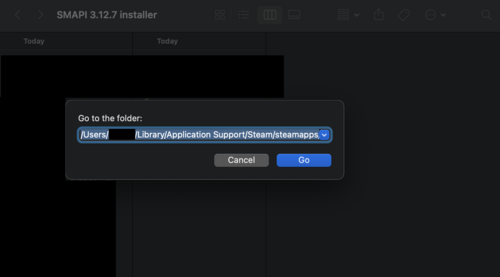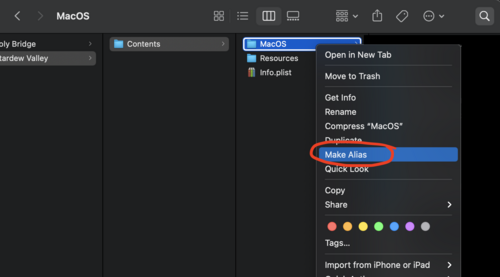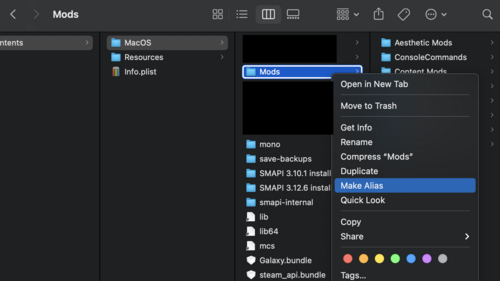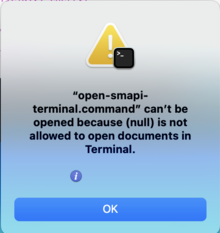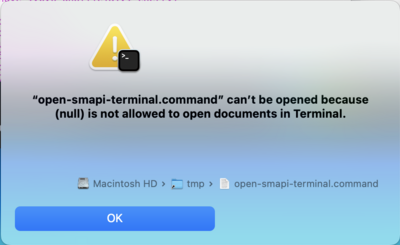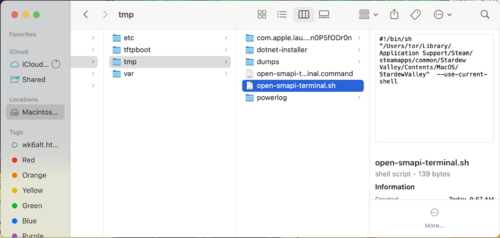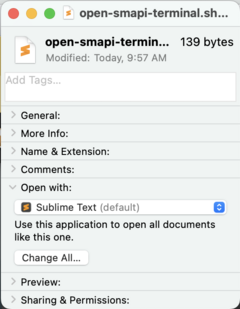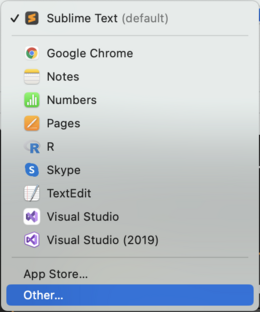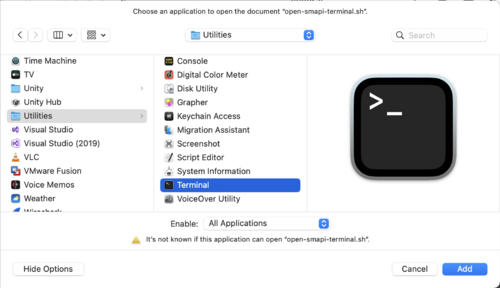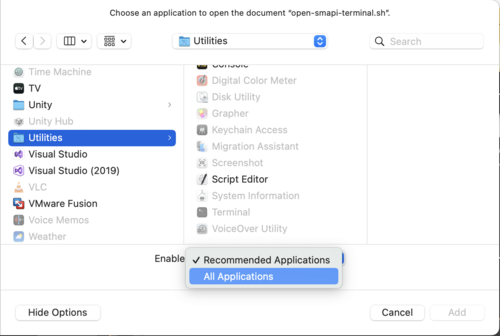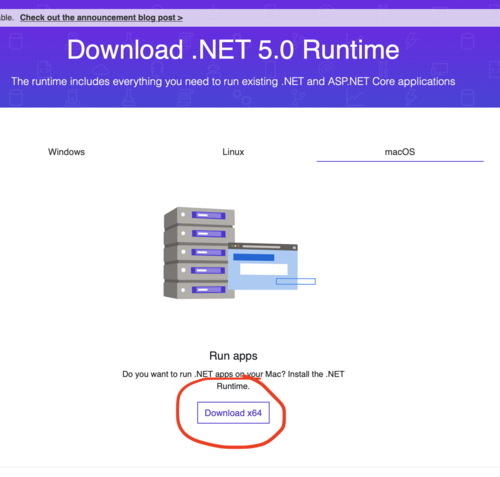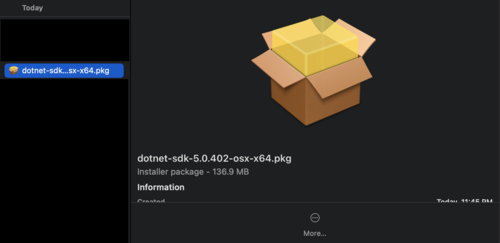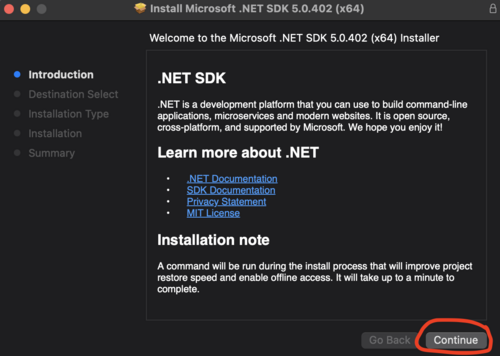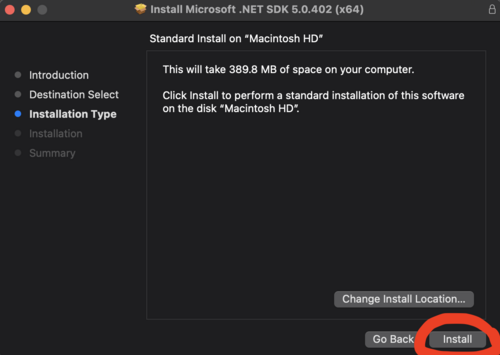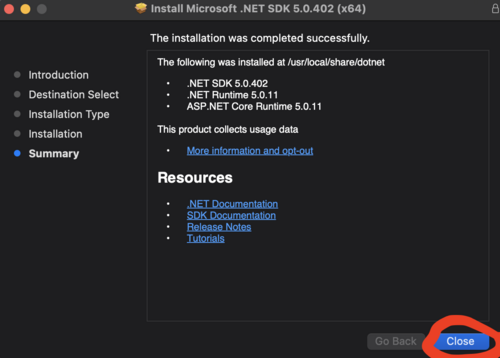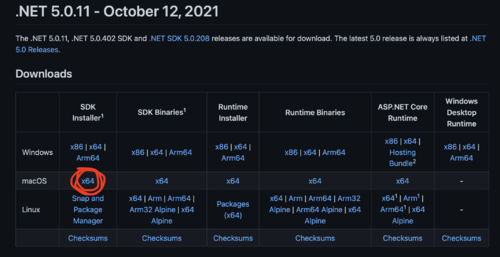Difference between revisions of "Modding:Installing SMAPI on Mac Pictorial Guide"
Rogue.toast (talk | contribs) m (→STEP 7) |
Rogue.toast (talk | contribs) m (→STEP 8) |
||
| Line 61: | Line 61: | ||
| | | | ||
| − | == '''STEP 8''' == | + | === '''STEP 8''' === |
[[File:15 SMAPI terminal success.png|800px]] | [[File:15 SMAPI terminal success.png|800px]] | ||
|| If successfully installed, you should see that two bundled mods were installed: Console Commands and Save Backup. You will then see "SMAPI is installed!" on the last line. Copy and save the game path at the top of the window for when you want to find your Mods folder. | || If successfully installed, you should see that two bundled mods were installed: Console Commands and Save Backup. You will then see "SMAPI is installed!" on the last line. Copy and save the game path at the top of the window for when you want to find your Mods folder. | ||
Revision as of 09:21, 31 March 2024
This guide is meant to be a supplement to the page that tells you how to install SMAPI on a Mac, with pictures to help guide the process.
Install SMAPI
From the instructions page: Download the latest version of SMAPI.
| Visual | Instructions | |
|---|---|---|
STEP 1 |
To start, pick an option for downloading -- any of these listed will work. Please be sure to check which version of SMAPI you need! SMAPI 4.0.0 or later will only work on SDV 1.6. If you are still playing SDV 1.5.6 you will need a previous version of SMAPI, which you can get from the GitHub Releases page.
| |
STEP 2 |
Once unzipped, double-click on the folder to open its contents. Locate the install on macOS.command file. | |
STEP 3 |
Highlight the file, right click on it (on a trackpad, two finger click), and select open. | |
STEP 4 |
After you select open, a pop-up will warn you that SMAPI was not made by a big company that registered the app with Apple. This is okay, so select open. | |
STEP 5 |
Next, a new window should open in Terminal. If it doesn't, or if the window doesn't look like the next image, just quit Terminal and re-open the install file.
| |
STEP 6 |
This step is to select your font color. Select one, input the number, and press enter. | |
STEP 7 |
The final step is to choose where SMAPI will install. Option 1 is the default MacOS location -- Double check the file path is correct. For most users, it should read: /Users/username/Library/Application Support/Steam/steamapps/common/Stardew Valley/Contents/MacOS.
| |
STEP 8 |
If successfully installed, you should see that two bundled mods were installed: Console Commands and Save Backup. You will then see "SMAPI is installed!" on the last line. Copy and save the game path at the top of the window for when you want to find your Mods folder.
|
Find and save your Mods folder
On a Mac, if you've saved where SMAPI installed mods, you can use Finder functions to get to your Mods folder, then save an alias of your Mods folder somewhere convenient.
Start by going to the Finder menu and going to Go, then Go to Folder.
Once you have the menu open, paste in the game path you saved from earlier. If you didn't save it, you can guess it using the pattern from the finding your mods folder page. The game path will be /Users/<username>/Library/Application Support/Steam/steamapps/common/Stardew Valley/Contents/MacOS and the Mods folder will be /Users/<username>/Library/Application Support/Steam/steamapps/common/Stardew Valley/Contents/MacOS/Mods
Once you hit return, it will take you to your Mods folder. It's inside a folder named MacOS, which is helpful to be able to navigate to later, especially if you want to switch between different sets of mods. To make your life easier, you can make an alias of this folder by right clicking and selecting Make Alias, then moving the alias somewhere convenient like your Documents or Desktop.
If you prefer to keep things simple, you can make an alias of just your mods folder. Then all you have to do to add mods is drag and drop their unzipped folders into this folder. It is very important to put mods in this folder and not anywhere else, or they will not work because SMAPI will not find them!
Manually Launching SMAPI on M1 Mac
Recent versions of MacOS, particularly those that rely on M1 chips, may present an error when attempting to launch SMAPI.
This error is telling you that SMAPI's attempt to auto-launch was blocked because of a permissions issue. You can manually override this error. First click on the information button (blue circle with italicized i), which will reveal a file path to the auto-launcher.
Double-click on the document icon to open a Finder window showing the hidden tmp folder with the SMAPI launcher. The tmp folder is in the hidden private folder, so it is easiest to access it directly through the error message.
If this is the first time you are doing this, your file will likely say open-smapi-terminal.sh (this is the default launcher that is created when installing SMAPI, and will not naturally be read by M1 Terminal).
Right-click (two-fingered click on trackpad) on open-smapi-terminal.sh and select Get Info. In the "Open With" section, open the drop-down menu and go all the way to the bottom to select "Other...". Your Applications folder will open.
(It does not matter what the default application is -- if yours is not Sublime Text, don't worry about it, we're changing it anyway. It must be set to Terminal for SMAPI to launch.)
In your Applications folder, scroll down to find the Utilities folder and open it. You should find Terminal listed here. Select it and click "Add."
If it is grayed out, use the drop-down menu below the applications list to Enable "All Applications". All applications may temporarily gray out, but they will shortly become available. Select Terminal and click "Add."
After clicking Add you should be returned to the tmp folder where the SMAPI launcher resides. Double-click on it to launch SMAPI with Terminal.
You may find you have to manually launch SMAPI every time you want to play. Once you have set Terminal as the launching application, manually launching is as simple as clicking on the info button in the error message, opening the tmp folder, and then double-clicking either the .sh or the .command launcher file. Both will launch SMAPI in terminal.
OLD, NOT USED ANYMORE: Install .NET 5
In the past, before SMAPI bundled .NET 5.0, these instructions were useful. They should no longer be relevant.
From the instructions page, it says to: Install .NET 5.
If you have an M1 Mac, you may need a different version. See the other section, Modding:Installing_SMAPI_on_Mac_Pictorial_Guide#For_M1_Macs_Only:_Install_.NET_5.0.11. If you're not sure if you have an M1 Mac, go to the apple in the top left, click "About My Mac", and look under processor. If it says M1, then you have an M1 Mac.
The following image is what the .NET 5 link in the instructions takes you to. Click the download circled in red.
Once you download the installer, it will look like this. You should double click on it to open, or right click and select open.
When you open the installer, it will have a series of steps to walk you through the installation. The following pictures circle which buttons to click along the way.
Once it finishes, it should look like this. You can delete the .NET 5 installer package if you like.
OLD, NOT USED ANYMORE: For M1 Macs Only: Install .NET 5.0.11
In the past, before SMAPI bundled .NET 5.0, these instructions were useful. They should no longer be relevant.
It seems like, at least for some users on M1 Macs, installing .NET 5.0.11 fixes things. You're going to need to go to the .NET 5.0.11 Github and download the thing circled in red below:
Once you have downloaded this installer, run it (similar to above). Please note that this is not guaranteed to work! But it is worth a try.
